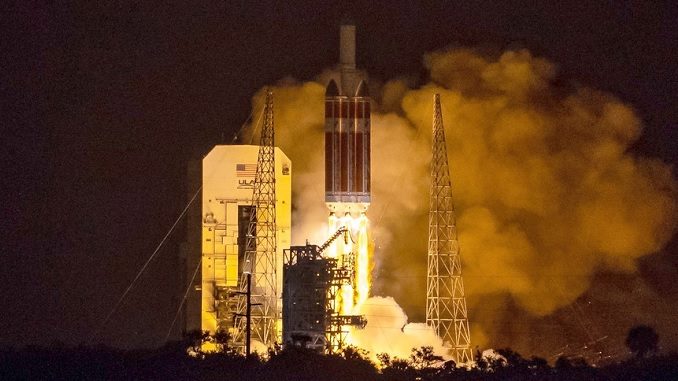
NASA had a successful launch on humanity’s first probe that will go to the sun, a seven-year mission meant to better understand the mysteries of our closest star.
The Parker Solar Probe, carried on United Launch Alliance’s (ULA) Delta IV Heavy rocket, blasted off from Space Launch Complex 37 on Cape Canaveral Air Force Station at 3:31 a.m., a day after the originally scheduled launch was aborted at last minute.
The launch was aborted because during the last minute check they found a technical glitch on the rocket carrying the probe which caused NASA to run out the clock on its 65-minute launch window Saturday.
“Teams worked very hard this evening, diligently getting through the launch process, looking at everything that they had to to get into the terminal count this evening,” Mic Woltman, of NASA’s Launch Services Program, said during NASA’s broadcast of the launch attempt. “As we picked up the count at T-minus four and got into a terminal count, the team received a gaseous helium red pressure alarm that kicked them out.”
The launch attempt was canceled after multiple delays. Saturday’s launch window for the Parker Solar Probe opened at 3:33 a.m.
The launch was first pushed to 3:53 a.m. But four minutes before that, NASA announced a “no-go” as the probe team investigated an issue.
At about 4:20 a.m., the team cleared the mission for launch, prompting cheers from spectators lining the NASA Causeway.
But then, with one minute and 55 seconds to go before the new time, NASA halted the launch.
The probe is expected to set a record as the fastest object to leave the earth, reaching 43,000 miles per hour during the launch. It will also become the fastest human-made object ever when it travels at about 430,000 miles per hour when it passes by Venus.




Be the first to comment